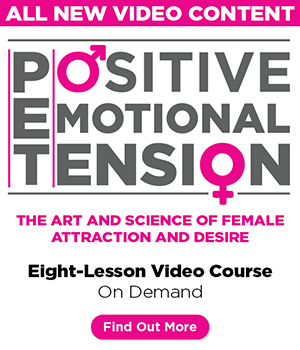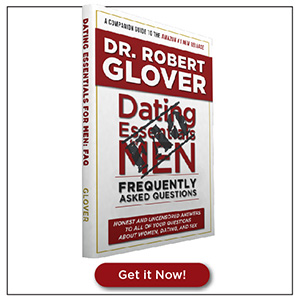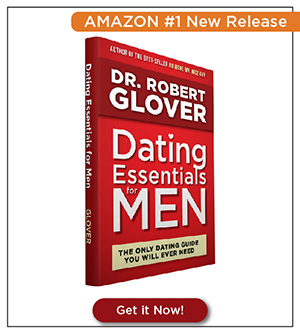Authentic Social Influence: Introduction
Welcome to Authentic Social Influence.
I’m really glad that Dr. Glover invited me to create and teach this course, and that you’ve signed up. Congratulations for taking this step to get on the path toward greatly improving your social life!
You are going to learn a lot here about how to put into practice and expand your “socialness” in your relationships, work, career, and life.
This course, while packed with information to upgrade your social life, is still merely a guide, a finger pointing at powerful concepts and ideas on the path to social mastery. It’s up to you to integrate them into your life and apply them as you see fit. The more quickly you practice them with consistency, the faster you’ll see results.
My Story: From Awkward to Social
When I was younger, I was naturally much more care-free and social than in my later teen and adult years. As I think back on my youth, I wasn’t afraid to say what I thought or express how I felt.
Going into my teen years, however, I became much more shy and withdrawn. I was always a sensitive kid, but “shy” isn’t what I’d call myself as a child under the age of eleven.
My mother was a highly anxious person (she’s no longer alive). She could talk to people just fine, but she was always moving, on-the-go, and, more than anything, worrying about something in her life. She was quick to flash her beautiful smile but often wouldn’t let people into her world; in that sense, she was a very private person. Perhaps this was a hidden form of social anxiety, or one in which someone overcompensates.
My father is an introspective type of guy, very intelligent, kind of shy and awkward when you first meet him. He suffered with depression for many years of his life.
As many of us do, I picked up the “goods” and the “bads” from my parents – it’s just natural to do so.
Influence of Parents, Peers and Culture
It is important to look at our parents’ influence on us but not blame them for who we are today. Cultural influences have also played a huge part in our development – influences of peers, people we looked up to, highly emotional experiences, and other factors.
In my case, I can see how I picked up my father’s aloofness and my mother’s anxiousness to develop my later shyness and social anxiety. I know other key experiences, such as moving to another state during puberty and junior high school, affected me as well. Even though I am no longer held back by social anxiety, I can still feel those experiences at times.
Yes, it’s interesting to think about why we got to be how we are – and how we learned certain beliefs and behaviors. But interesting only goes so far. It does little to actually remedy the situation.
I “learned” how to be shy and socially anxious from embarrassing emotional experiences in my teen years, combined with my “anxious nature” absorbed from my mother and probably some shyness inherited from my father, too.
For me, being shy was a pattern of getting attention by being aloof – a successful strategy in some circumstances, but not in most. I had no real power over myself in social situations, and I blamed the world or others for not wanting to talk to me: a classic victim story. I also was uncompassionate and insensitive to others, and very self-centered – but what can you expect from a teenager? However, this carried on beyond being a teenager and created a lot of unhappiness in my social life.
Sometimes having an understanding of the origins of our issues can help us resolve or heal them, but often this doesn’t help. We have to find other ways to dissolve our anxiety over things like talking to attractive women, being in social situations, speaking publicly, and navigating the workplace.
Anyone Can Learn to Be Social
When we make statements such as, “I am just bad with people” or “You/we/they are just better than me” or “The world is a dangerous place,” we aren’t talking about how things are. We’re talking about how we are and the world that shows up through such beliefs.
So we have to be careful making such assessments as if they were reality, because they cut off what’s possible for us to be and do in the world. They drive our actions, and it’s easy – for all of us, including me – to forget that.
Though we may end up with different social styles, anyone can learn and apply the concepts in this course.
I used to think that someone is “either good with people or isn’t” – but that’s simply not true.
The more accurate assessment would be, “Some people have learned to be social, and some haven’t yet, but everyone can.”
See the difference in what’s possible, given those different assessments?
Switching will happen as quickly or slowly as the time you put into it. It also might not follow the linear growth path you expect, but it rarely does in my experience.
I believe you can do it. I believe this, because I went from feeling very socially awkward to feeling very socially connected. But what I believe doesn’t really matter. It’s what you believe that does.
What ASI Aims to Do
Authentic Social Influence is designed to help you:
-
Build awareness around new concepts to be more social everywhere
-
Uncover old patterns that don’t serve you in social situations
-
Take new actions to grow your social abilities, influence, and circles to whatever level you want – in work, dating, life – everywhere
I am now a very social person. I focus on how I can help and connect people more than ever. Am I the best in the world? No. But I’m damn good at it, especially when it comes to networking and making new connections. This, from someone who could barely introduce himself in social situations due to shyness and social anxiety.
I’ve come from being a more or less anti-social to a very social person who attends 2-4 networking events a week, goes out on weekends with friends, and chats to those around him. I’m an active member of Toastmaster’s and now host a networking group once a month, among involvement in other groups and getting people together socially.
You can do the same as I’ve done or more, whether you want to have more social influence in your current job with colleagues and bosses, or show up more as a leader in your social circles. You can choose whatever area of life in which you want to be more social by using the concepts and exercises presented here and by discovering and practicing your own authentic social style.
Format of the ASI Course
Each lesson will have the following format:
-
Lesson Content
-
Bonus Sections and Resources (where applicable)
-
Homework Exercises
-
Online ASI Discussion and Support Forum
ASI Lessons:
Lesson 1: Principles of Authentic Social Influence
Lesson 2: Developing Your Social Skills & Style
Lesson 3: Building Your Social Circles Authentically
Lesson 4: Advanced Techniques and Continuing on your Authentic Social Path
I am looking forward to the journey of helping you achieve the kind of authentic social influence you have always wanted.
David Hamilton
Transformational Coach and Creator of Authentic Social Influence
Social Expression
Everlution
(c) Copyright 2013, David Hamilton
Download a PDF of ASI Introduction
Go to Registration Page for Authentic Social Influence|
|









